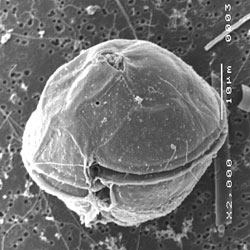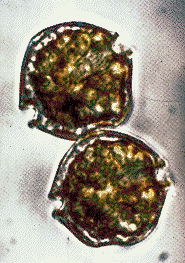Alexandrium tamarense: Difference between revisions
imported>Ciro Monaco Jr. |
imported>Ciro Monaco Jr. |
||
| Line 60: | Line 60: | ||
==References== | ==References== | ||
[http://woodshole.er.usgs.gov/operations/modeling/wgulf/wgulf.html Don Anderson WHOI, | [http://woodshole.er.usgs.gov/operations/modeling/wgulf/wgulf.html Don Anderson WHOI, Brad Butman USGS, Peter Franks SIO, Rocky Geyer WHOI, Ted Loder UNH, Rich Signell USGS, Bruce Keafer WHOI, Derek Fong WHOI, "''Toxic "Red Tide" Populations in the Western Gulf of Maine: Sources, Transport, and Nutrient Environment] | ||
Brad Butman USGS, | |||
[Sample reference] [http://ijs.sgmjournals.org/cgi/reprint/50/2/489 Takai, K., Sugai, A., Itoh, T., and Horikoshi, K. "''Palaeococcus ferrophilus'' gen. nov., sp. nov., a barophilic, hyperthermophilic archaeon from a deep-sea hydrothermal vent chimney". ''International Journal of Systematic and Evolutionary Microbiology''. 2000. Volume 50. p. 489-500.] | [Sample reference] [http://ijs.sgmjournals.org/cgi/reprint/50/2/489 Takai, K., Sugai, A., Itoh, T., and Horikoshi, K. "''Palaeococcus ferrophilus'' gen. nov., sp. nov., a barophilic, hyperthermophilic archaeon from a deep-sea hydrothermal vent chimney". ''International Journal of Systematic and Evolutionary Microbiology''. 2000. Volume 50. p. 489-500.] | ||
[http://www.ncbi.nlm.nih.gov/sites/entrez?db=genomeprj&cmd=Retrieve&dopt=Overview&list_uids=115] | |||
[http://en.citizendium.org/wiki/Main_Page | Citizendium] | [http://en.citizendium.org/wiki/Main_Page | Citizendium] | ||
Revision as of 07:18, 1 April 2008
Articles that lack this notice, including many Eduzendium ones, welcome your collaboration! |
Classification
Higher order taxa
Domain: Eukaryota Phylum: Alveolata Class: Dinophyceae Order: Gonyaulacales Family: Gonyaulacaceae
Domain; Phylum; Class; Order; family [Others may be used. Use Tree of Life link to find]
Species
Alexandrium tamarense
Synonyms: Gonyaulax tamarensis Lebour 1925 , G. excavata (Braarud) Balech 1971 Protogonyaulax tamarensis (Lebour) F. J. R. Taylor 1979
Description and significance
Alexandrium tamarense is a single-celled dinoflagellate found primarily in coastal marine environments and is commonly known as the culprit that causes the algal blooms called red tides. It is considered a photoautotroph and contains brown chloroplasts, is 25-46 micrometers in length,
Like other dinoflagellate species, A. tamarense propels itself through water using two flagella in a whip-like fashion. It is also considered "armored" because it is surrounded by a layer of cellulose that form plates known as thecae.
Describe the appearance, habitat, etc. of the organism, and why it is important enough to have its genome sequenced. Describe how and where it was isolated.
Genome structure
Like other dinoflagellates, Alexandrium tamarense consists of large amounts of DNA compared to other eukaryotic organisms. It consists of 144 chromosomes which are condensed in the nucleus until DNA replication. A 6,723 unique (11,171 total) expressed sequence tags (ESTs) have been generated.
It is still not clear which genes play a role in toxin production.
Describe the size and content of the genome. How many chromosomes? Circular or linear? Other interesting features? Does it have any plasmids? Are they important to the organism's lifestyle?
Cell structure and metabolism
Describe any interesting features and/or cell structures; how it gains energy; what important molecules it produces.
Ecology
Describe any interactions with other organisms (included eukaryotes), contributions to the environment, effect on environment, etc.
Pathology
How does this organism cause disease? Human, animal, plant hosts? Virulence factors, as well as patient symptoms.
Application to Biotechnology
Does this organism produce any useful compounds or enzymes? What are they and how are they used?
Current Research
Enter summaries of the most recent research here--at least three required

